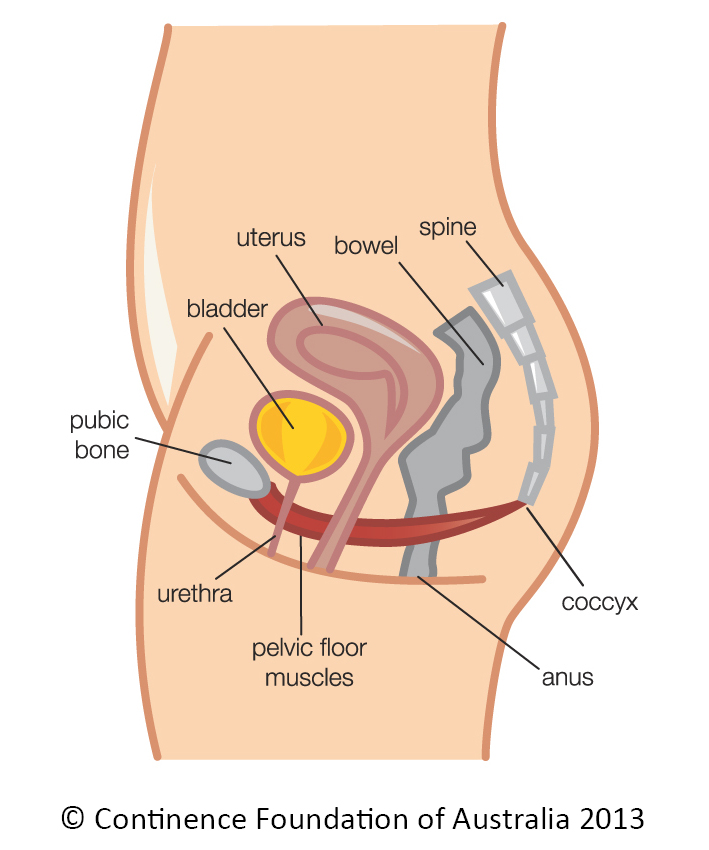
There are many things in life to feel guilty about: that second helping of cheesecake, the unused gym membership or forgetting your child’s birthday (and having to hear about it for the next five years).
Well, get ready to add one more thing to the list: not doing pelvic floor muscle exercises several times a day. And yes, I did say several times a day.
Turns out you’re not alone in ignoring your pelvic health. A Continence Foundation of Australia survey found a whopping 98 per cent of women don’t do pelvic floor muscle exercises the recommended three times a day. And of the few who do, only half do them correctly.
But before letting you in on the secret knack of how to do them properly, it’s worth knowing a little more about the crucial role these unsung muscles play and the payoffs for having them in mint condition.

The pelvic floor muscles form the base of your core, with the diaphragm at the top, transverse abdominus at the front and multidifidus at the back. The pelvic floor muscles act as a sling or hammock, holding up the pelvic organs – namely your bladder, uterus and bowel. And just like a well-used hammock, these muscles can start to sag over time and under stress, i.e. a 3kg bub using your womb as a private trampoline session for months on end. Childbirth, general weight gain and menopause can also weaken the pelvic floor muscles.
Strong pelvic floor muscles ensure your pelvic organs sit in the correct position, prevent bladder leakage (when you sneeze, laugh, cough, lift or exercise), improve sexual function (for men too so share this around), and can even flatten your abs.
So, just to recap the benefits: not wetting your pants, better sex and a flatter stomach. And if that’s not incentive enough, did I mention exercising your pelvic floor muscles can be done anywhere at any time, without the need for lycra or a yoga mat?
Get the knack
So now you know why you should do them, it’s time to learn the knack with this quick and easy method, which can be done while seated, standing or lying down.
- Lengthen your spine and relax your shoulders.
- Focusing on your back passage, lift and squeeze upwards and inwards as though you are trying to avoid passing wind, then bring that pelvic floor lift through to the front as though you are also trying to stop the flow of urine.
- Lift and squeeze your pelvic floor for as long as possible, aiming to hold for 3-5 seconds, building up to 10 seconds over time. Your shoulders, buttocks, thighs, hands and feet should remain relaxed, and you should continue to breathe as normal throughout the lift.
- Rest your pelvic floor for the same amount of time as your lift, before repeating.
- Aim for up to 10 holds in one set. Repeat sets twice more throughout the day.
A few points to remember: don’t hold your breath and don’t clench your butt, thighs or face. All the lifting and squeezing should be internal.

If you are still unclear on the whys and how-tos, you can watch a short video by physiotherapist Shira Kramer demonstrating how to do them correctly, or go to pelvicfloorfirst.org.au for more details. It’s also worth considering checking in with a pelvic floor physiotherapist to see if you are doing the exercises correctly. Most can perform a real-time ultrasound (don’t panic, you get to keep your clothes on) so you can see if you are activating the correct muscles. The Continence Foundation of Australia has a national directory to help you find a local specialist.

Fab abs – yes please
How do I get flat abs? If you answered “lots of sit ups and crunches”, slap
your brow and say “my bad”.
According to the experts, sit ups and crunches are not your friends when it comes to flat tummies. While they will tone the “six-pack” muscles, they won’t flatten the stomach, and can instead cause excessive upper-abdominal tension - essentially technical speak for a “pot belly”.
Low-impact aerobic exercise is better to help lose extra abdominal fat. Pelvic floor exercises will also help to achieve flatter abs if done correctly, with relaxed upper abdominals and normal lower abdominal co-contraction.
Recommended for you:
How to exercise without wetting yourself

